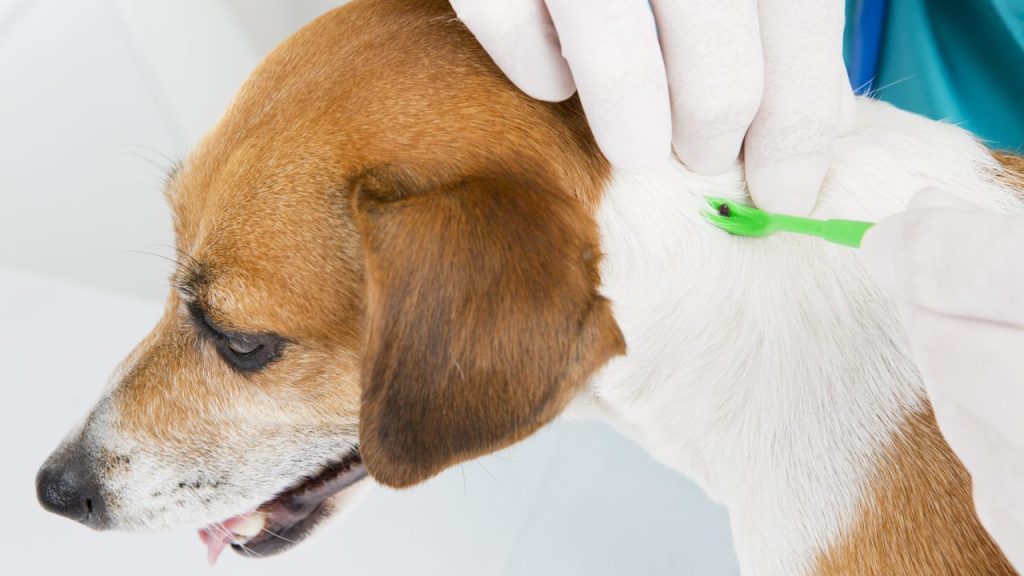With tick-borne illnesses on the rise, it’s important to know what diseases these tiny parasites can transmit, as well as how to prevent them. Anaplasmosis is one such disease caused by ticks on dogs. Spot the signs of anaplasmosis in dogs and learn what to do if you suspect your dog is affected.
What is anaplasmosis?
When you think of disease, you may think of a virus. However, anaplasmosis is actually a tiny bacteria transmitted by ticks. Both the deer tick and dog tick can transmit this bacteria through their bites. The tick must stay latched onto its host for 24-48 hours to transmit the bacteria. From there, it can take 1-2 weeks for symptoms to appear.
What are the symptoms of anaplasmosis in dogs?
The most common signs of anaplasmosis in dogs are fever and lethargy. However, some dogs may never show signs of illness, but can still transmit the bacteria to others through additional tick bites. Since fever and lethargy are very general symptoms, it can be hard to diagnose anaplasmosis without veterinary examination. Your vet will take a sample of your dog’s blood and perform a test designed to check for the most common tick-borne diseases. If the test is inconclusive, your vet may also send another sample to a lab for additional testing.
With a positive result, your vet will start treatment. This includes a round of antibiotics called doxycycline which is the most beneficial in treating tick-based diseases. In most cases, you’ll see a rapid improvement in your dog’s symptoms within 24 hours, however, it is best to give the entire series of antibiotics to ensure the bacteria is gone. Once the antibiotics are complete, your vet may also recommend another blood test to ensure a negative result.
When to seek veterinary care
It’s always a good idea to visit the vet if you’ve spotted ticks on your dog recently, notice any signs or symptoms, or if your dog reacts to any tick bites. Even in mild cases, a round of antibiotics is important for clearing the bacteria and preventing transmission to others.
While rare, anaplasmosis in dogs can cause more severe symptoms that make your dog very ill. This includes vomiting, diarrhea, loss of appetite, and dehydration. If your dog is very sick, it’s best to seek veterinary care right away. Your vet can provide palliative care such as IV fluids, medications to help with nausea and appetite, and antibiotics.
How to spot and remove ticks on dogs
The best way to prevent your dog from getting anaplasmosis is to prevent ticks. A monthly flea and tick prevention such as topical Frontline, Seresto collars, and NexGard oral medications can all keep ticks at bay. If you’ll be visiting wooded or brush-filled areas, take the time to inspect your dog after every outing and remove any ticks on the body.
The best way to remove a tick is with special tick-removing tweezers. However, regular tweezers can also be used carefully. Be sure to gently twist and remove the tick without squeezing. You want to avoid having the tick’s head detach under your dog’s skin. It’s also a good idea to monitor any bite spots for issues such as a rash, swelling, or infection.
Treating anaplasmosis in dogs has a very good outcome. However, taking measures to keep your dog from getting it in the first place can help ensure they stay safe and healthy. Now that you know more about anaplasmosis, check out our guide on how to spot fleas on dogs. Or, learn more about other illnesses such as heartworm, and how to prevent it.









